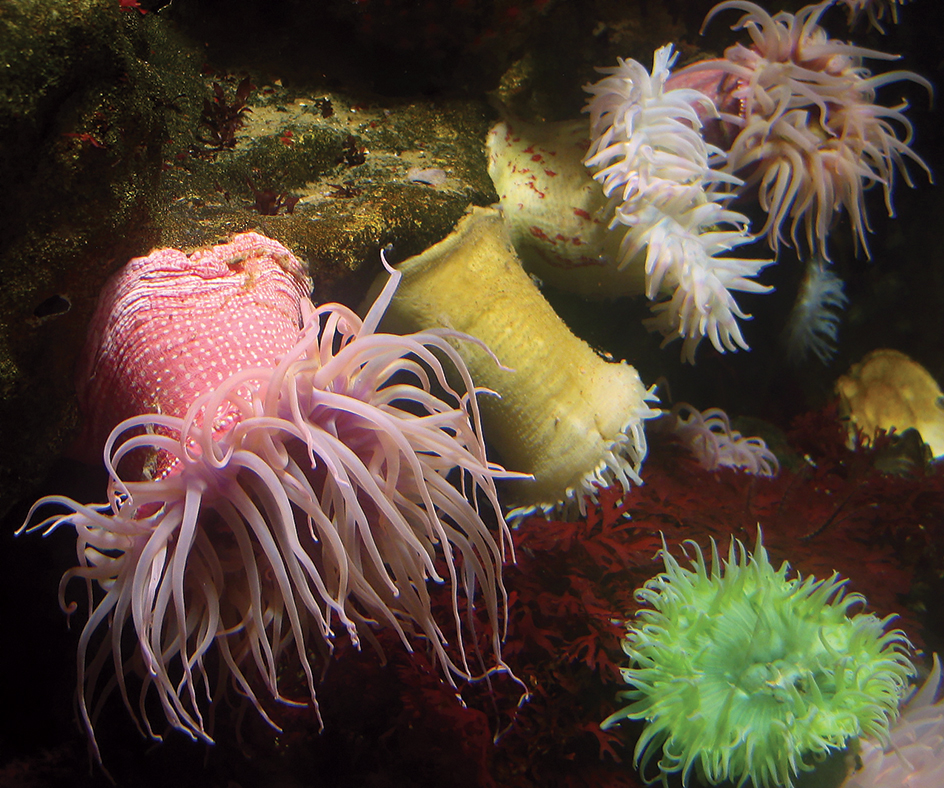Sea anemone, << uh NEHM uh nee, >> is a kind of sea animal that resembles a flowering plant. Sea anemones get their name from a group of flowers called anemones, but their closest relatives include corals and jellyfish. The bodies of sea anemones measure from about 1/4 inch (6 millimeters) to over 3 feet (90 centimeters) in diameter. They can be blue, green, pink, red, or multicolored.

An individual sea anemone is called a polyp. The closed, bottom end of its body has a structure called a foot. The animal uses its foot to attach itself to rocks, shells, wharf pilings, or even such living animals as crabs. It may also use its foot to move about slowly. The other end of the body contains the open mouth surrounded by slender structures called tentacles. Sea anemones often use their tentacles to capture food, including small invertebrates (animals without backbones) and even fish. Stinging cells in the tentacles eject poison or sticky threads that immobilize prey. The tentacles then pull the prey into the mouth. When disturbed, a sea anemone contracts its tentacles and shortens its body, making it look like a round lump on a rock.
Loading the player...Bubble-tip anemone
Many sea anemones reproduce sexually. Fertilized eggs of these species develop into small larvae, settle on the sea bottom, and become polyps. Other species reproduce by budding, in which a young sea anemone grows out of the base of its parent. Eventually, it breaks off and grows by itself. Still other kinds can reproduce by pinching off a small portion of the foot. This small portion then grows into a new polyp.

